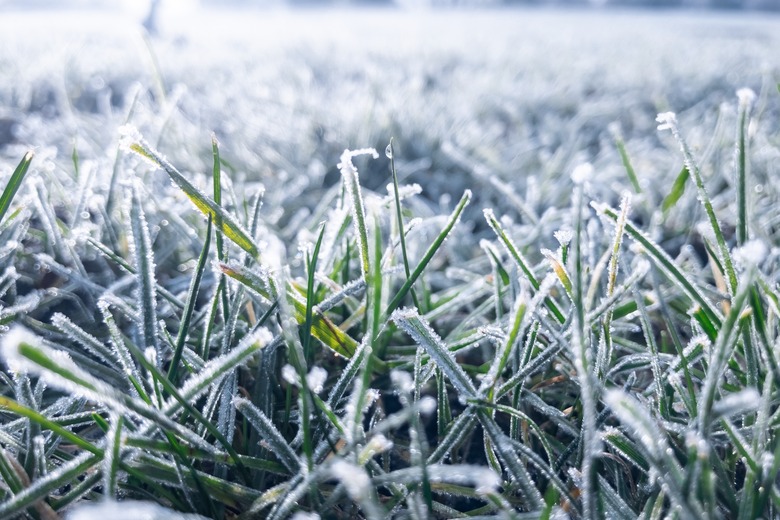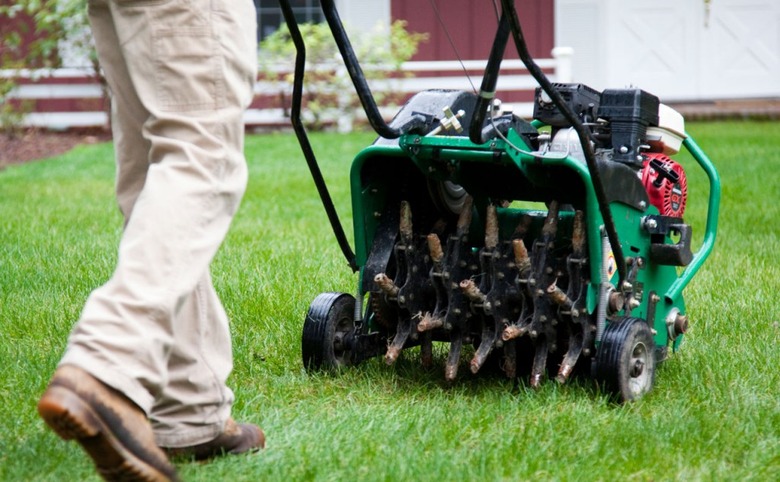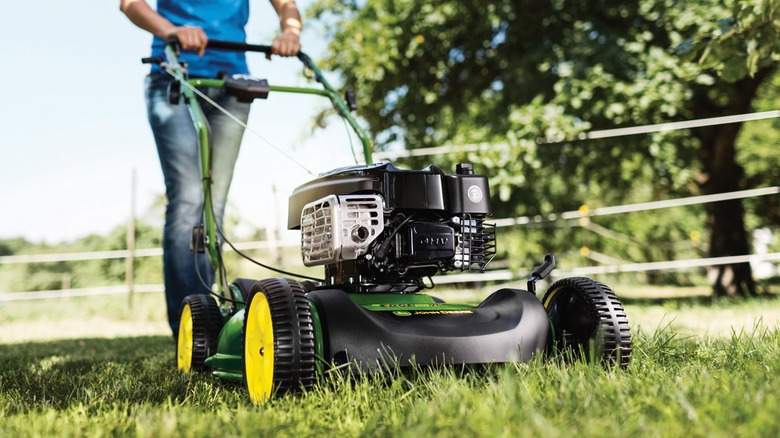Fall Lawn Care: Winterizing Your Lawn
Fall is arguably the most important season for taking care of your lawn and is the key time to winterize. Warm-season grass uses the fall and winter seasons to rest and rejuvenate after the punishing heat and dryness of summer. The grass leaves (blades) stop growing, and the grass plants transfer their growing energy to the roots to strengthen the root system over the winter. Therefore, the most important fall prep for winter is feeding your lawn and making sure it can breathe, through aeration and, if necessary, dethatching. Fall is also the best time to sow new grass seed in bare spots or to overseed the entire lawn. Just keep in mind that some winterizing steps differ between cool-season and warm-season grasses.
Winterize a Lawn With Aeration
Winterize a Lawn With Aeration
Aeration is the standard cure for a compacted lawn. If you have trouble inserting a screwdriver into the soil of your lawn, it's time to aerate, either with a power aerator or a manual aerating tool. And fall is a good time to aerate because it helps bring water, nutrients and oxygen directly to the roots—via the holes created by aerating—to promote root health over the winter. However, fall aeration generally applies to cool-season grasses, such as fescue, Kentucky bluegrass and perennial rye (among others). Lawns with warm-season grasses (St. Augustine, Bermuda, bahia, zoysia, etc.) typically should be aerated in late spring, when these grasses begin their peak time of growth.
If you aerate in fall, do it early, when the ground is still soft and you're still watering the grass. If you plan to seed the lawn, aerate just before seeding. The little holes are like incubators for seed germination. Use a core aerator, which removes small plugs of soil, instead of a spike aerator, which can compact the soil further.
Dethatching a Lawn Before Winter
Dethatching a Lawn Before Winter
Thatch is the layer of dead grass and other plant matter that lies at the base of the grass blades, covering the soil. All lawns have thatch, and it's a problem only when there's too much of it. A thatch thickness of up to 1/2 inch or so is beneficial; anything over 3/4 inch indicates it's time to dethatch as part of your winterizing plan. This exposes the soil to light, water and nutrients for better (you guessed it) root health.
You can dethatch a lawn with a manual dethatching rake or with a power dethatcher. Once it's done, rake up the loosened thatch, and compost or discard it. Water the lawn right away, and continue watering as usual to help the grass recover quickly.
Seeding a Lawn in Fall
Seeding a Lawn in Fall
For lawns with cold-season grass, fall is the best time to sow grass seed, because the seeds can germinate before the ground freezes, and the new grass will be largely established come spring. In fall, the seeds also have less competition from weeds and less drying from the sun, and they're less likely to get trampled from heavy foot traffic.
In regions where warm-season grasses are common, you can overseed with cold-season grass in the fall because the cold-season grass will grow through the winter while the warm-season grass goes dormant. However, warm-season grass seed is best sown in late spring or early summer, when these grasses germinate.
If you're aerated and/or dethatched your lawn, apply seed immediately after aerating or detaching, then fertilize and water. As a general rule, use a quality seed that is optimized for your climate, and use the same type of seed from year to year for a uniform look to your lawn.
Fertilize to Winterize
Fertilize to Winterize
Choosing the best time to fertilize is an important consideration. With cool-season grasses, it's best to fertilize with an organic "winterizer" fertilizer in September to October, or about two to three weeks before the ground freezes. If you have warm-season grass, you can fertilize in fall, but it's best to do it before September because the fertilizer encourages new growth; if you feed the lawn later in the fall, the new growth will be susceptible to freezing and unnecessary stress.
Raking, Mowing and Weeding Before Winter
Raking, Mowing and Weeding Before Winter
The dreaded lawn maintenance tasks always seem to last longer than you expect, but of course, winter inevitably comes, giving you a break for a few months. The important thing is not to skip these tasks in the fall. Most important, rake up the leaves or mulch them well (with a mulching mower) and leave them on the lawn. Don't leave whole leaves on the grass because they will block sun and air and promote mold and pathogens.
Weeding should be selective. For perennial weeds, such as bindweed, clover and dandelions, local application (not broadcast) with weed killer is best. These weeds are storing nutrients for the winter, just like the grass, so they'll readily take in the chemicals. Remove any seed pods or flowers from the weeds to prevent reseeding. For annual weeds, such as crabgrass, purslane and chickweed, you can pull them now so you don't have to look at them all winter, but they will die with the frost in any case. Pre-emergent weed killers for perennial weeds are problematic in fall because they can suppress seed germination of the grass right along with the weeds. These are safer to use in the spring.
Mowing is simple: Just mow your lawn as you usually do (not shorter) until the grass stops growing. You don't need to give it a short haircut to winterize, as is often recommended. Mowing as usual allows the grass to spread new seedlings naturally, and it prevents unnecessary stress on the grass plants.


